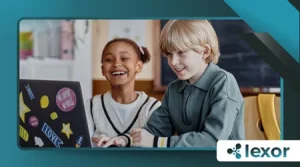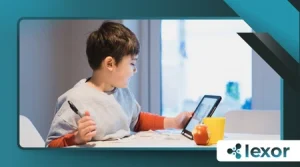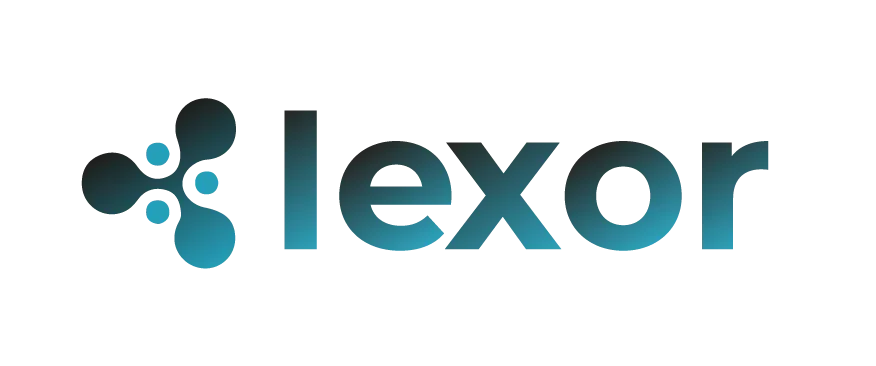How to Use Educational Videos Effectively with Kids

In an era where digital content dominates childhood experiences, parents and educators must learn to use educational videos effectively.
The challenge isn’t scarcity—it’s curation, engagement, and meaningful application.
With children spending an average of 2.5 hours daily on screens (Common Sense Media, 2025), passive consumption remains a concern.
Yet, when leveraged strategically, videos can enhance retention, spark curiosity, and bridge learning gaps.
The key lies in intentionality. Instead of treating videos as digital babysitters, we must integrate them into structured, interactive learning experiences.
How do we ensure that screen time translates into cognitive growth rather than distraction? The answer involves a mix of science-backed strategies and hands-on application.
1. The Science Behind Video Learning: Why It Works (When Done Right)
Young minds process visual information at an astonishing speed—60,000 times faster than text, as MIT’s early childhood research confirms. However, retention depends on active engagement, not passive viewing.
Neurologically, videos stimulate both auditory and visual pathways, reinforcing memory. But without interaction, this potential remains untapped.
A 2024 Stanford study found that children retain 34% more information when videos are paired with discussions or activities.
For example, a child watching a documentary on ocean life might remember facts better if they later draw sea creatures or mimic animal movements. This multisensory approach strengthens neural connections.
Additionally, well-designed educational videos employ storytelling, pacing, and repetition—elements that align with cognitive development.
Platforms like Khan Academy Kids excel by using animated narratives to simplify complex topics.
++How VR Is Helping First Responders and Emergency Trainings
However, not all content is equal. Fast-paced, overstimulating videos (common in algorithm-driven feeds) can hinder focus. Selecting slower, dialogue-rich clips often yields better comprehension.
The takeaway? Videos are powerful tools, but their effectiveness hinges on how they’re used, not just what is watched.
2. Choosing the Right Content: Quality Over Quantity
With endless options available, selecting the right videos is crucial. A high-quality educational video should:
- Align with learning goals (e.g., teaching phonics, introducing science concepts).
- Encourage interaction (pausing for questions, prompting physical responses).
- Avoid excessive distractions (flashy edits, irrelevant sounds).
For instance, BBC Bitesize combines concise explanations with quizzes, ensuring engagement without overwhelming young viewers.
++How to Monitor Your Child’s Learning Progress with Technology
Meanwhile, poorly designed content—such as overly commercialized “edutainment” with rapid scene changes—can reduce attention spans.
A 2025 study by the American Pediatric Association found that children exposed to high-stimulation videos struggled more with sustained focus in traditional classrooms.
Parents and teachers should preview videos, checking for:
- Clear, age-appropriate language.
- Pacing that allows processing time.
- Opportunities for real-world application.
A practical example: After watching a video on plant growth, kids could plant seeds and track progress, reinforcing the lesson tangibly.
3. Timing and Structure: Less Is More

The ideal video length for young learners? 5-10 minutes. Beyond that, attention wanes. Platforms like National Geographic Kids segment content into bite-sized clips, maximizing retention.
++How Technology is Helping Kids with Special Needs Learn Better
Scheduling matters too. Watching a math tutorial right before homework leverages the “priming effect”—where recent exposure boosts recall. Conversely, late-night viewing may interfere with sleep and retention.
A useful strategy is the “Watch, Pause, Discuss” method:
- Watch a short segment.
- Pause to summarize key points.
- Discuss or reenact what was learned.
For example, after a video on fractions, a child could use pizza slices to visualize divisions, turning abstract concepts into tangible understanding.
4. The Adult’s Role: Guided Co-Viewing
Passive supervision isn’t enough. Adults should:
- Ask open-ended questions (“What do you think will happen next?”).
- Connect videos to real-life experiences (e.g., comparing a documentary’s animals to a zoo visit).
- Limit autoplay to prevent mindless consumption.
Research from Harvard’s Center on Media and Child Health (2025) shows that kids in co-viewing environments develop stronger critical thinking skills. They learn to analyze content rather than just absorb it.
A real-world application: If a child watches a history video, parents might follow up with a family tree discussion, making past events personally relevant.
5. Avoiding Common Pitfalls: What Not to Do
Despite their benefits, educational videos can backfire if misused. Common mistakes include:
- Over-reliance on screens (replacing human interaction).
- Ignoring content ratings (exposing kids to inappropriate themes).
- Skipping follow-up activities (missing reinforcement opportunities).
For example, a child watching coding tutorials without hands-on practice won’t retain much. Instead, pairing videos with simple programming games (like Scratch Jr) ensures applied learning.
Another pitfall? Algorithm traps. YouTube’s autoplay often leads to irrelevant—or even harmful—content. Using kid-safe platforms like PBS Kids minimizes this risk.
6. The Future: AI and Personalized Learning
Emerging technologies are reshaping educational videos. AI-driven platforms (e.g., Age of Learning’s adaptive system) now adjust content difficulty based on a child’s responses.
Imagine a video that pauses when confusion is detected, offering simplified explanations. Or one that suggests related offline activities based on viewing history. This is the future of personalized education.
However, technology should supplement, not replace, human guidance. Even the smartest algorithms can’t replicate a teacher’s intuition or a parent’s encouragement.
Conclusion: Making Screen Time Count
Learning to use educational videos effectively isn’t about eliminating screens—it’s about transforming them into intentional teaching tools.
By combining high-quality content, active participation, and real-world connections, we turn passive watching into dynamic learning. The goal? Empowered, curious kids who don’t just consume media—they learn from it.
Ready to rethink screen time? Start today with just one intentional video session.
Frequently Asked Questions (FAQs)
Q: How much screen time is appropriate for educational videos?
A: The American Academy of Pediatrics recommends no more than 1 hour per day for ages 2-5, with co-viewing. Older kids can have slightly more, provided it’s purposeful.
Q: Are all “educational” videos actually beneficial?
A: No. Look for research-backed platforms (e.g., Khan Academy, BBC Bitesize) over entertainment-focused ones. Always preview content.
Q: Can videos replace teachers?
A: Never. They’re supplements, not substitutes. Human interaction remains vital for deeper understanding and emotional development.
Q: How do I stop autoplay from leading to irrelevant content?
A: Use kid-safe modes (e.g., YouTube Kids’ approved content only) or dedicated educational apps with no algorithmic recommendations.
Q: What’s the best way to reinforce video lessons?
A: Pair them with hands-on activities—e.g., science experiments after a STEM video, or storytelling after a language lesson.
